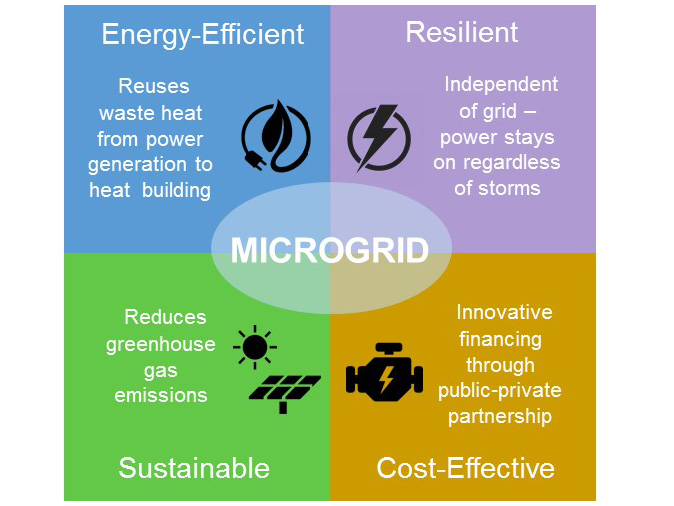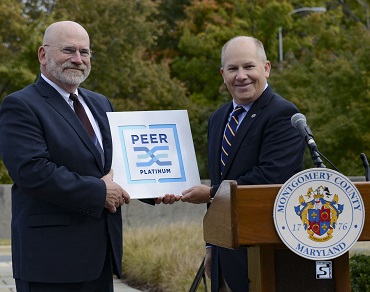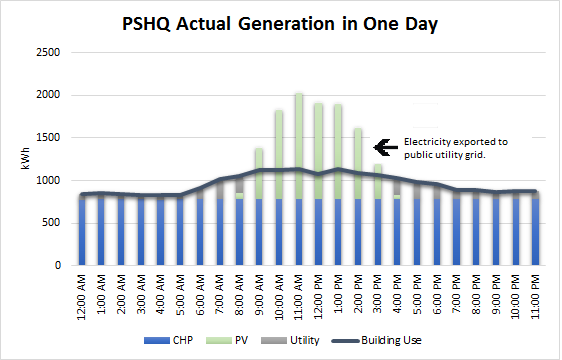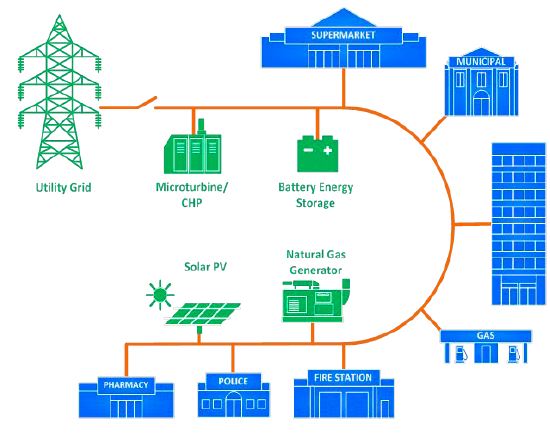Category Name
Microgrids
Microgrids
Montgomery County is installing microgrids to allow key facilities to operate without any power from the utility grid, ensuring public safety and community resiliency during major storms and other disasters.
About Microgrids
Media heading
Montgomery County is embracing microgrids to improve the resiliency of public facilities, reduce their environmental impact and reduce operational costs to taxpayers. Microgrids are local power systems that use clean and renewable energy sources on an ongoing basis, such as
- solar panels,
- combined heat and power systems,
- batteries, and
- advanced controllers that include built in cybersecurity.
On site generation enables the system to operate independently from the electric utility during a grid outage. The microgrid initiative was prioritized due to the County’s history with extended large-scale power outages due to major storms and the County government’s goal of reducing greenhouse gas emissions 80% by 2027. When considering building microgrids, the Department of General Services focuses on facilities essential for the continuity of public services during disasters or other events when those services are needed most.
Media heading
Montgomery County has finalized construction of its first two microgrids, leveraging its innovative energy purchasing regulations to create a public private partnership. A team of private entities to finance, own and operate the systems at no upfront cost to the County. These projects are a national model to improve the resiliency of local governments and are receiving national attention, in addition to winning a 2018 NACo Achievement Award for the microgrid projects. Learn more about Montgomery County’s microgrid projects by watching this presentation from October 2017 given as part of a panel on Improving Resilience Through Microgrids and Battery Storage at the Edison Electric Institute in Washington, DC.
Environmental and Financial Benefits
Media heading
Montgomery County has entered into an innovative public-private partnership that allows the microgrids to be installed without any upfront costs to the County. These two sites are anticipated to generate over 11 million kWh of electricity, enough to reduce greenhouse gas emissions as much as taking over 1,400 cars off the road or planting more than 178,000 trees. The microgrids also will ensure that the County can continue to provide critical services to the community during major storms and other external events. See the graph for actual generation within one day at PSHQ. During the middle part of the day, enough electricity is generated on-site to export into the public utility grid.
More About Our Microgrids
Montgomery County’s Microgrids Create Sustainable Energy
Learn about why Montgomery County sought out microgrid solutions and ultimately partnered with Duke Energy Renewables & Schneider Electric to increase resiliency, reduce greenhouse gas emissions and prepare for future power outages.
Montgomery County Uses Innovative Microgrid Technology to Weather the Storm
Hear from Montgomery County government leadership on how the County increased resiliency, upgraded electrical infrastructure, and enhanced sustainability by installing two advanced microgrids at no upfront cost.
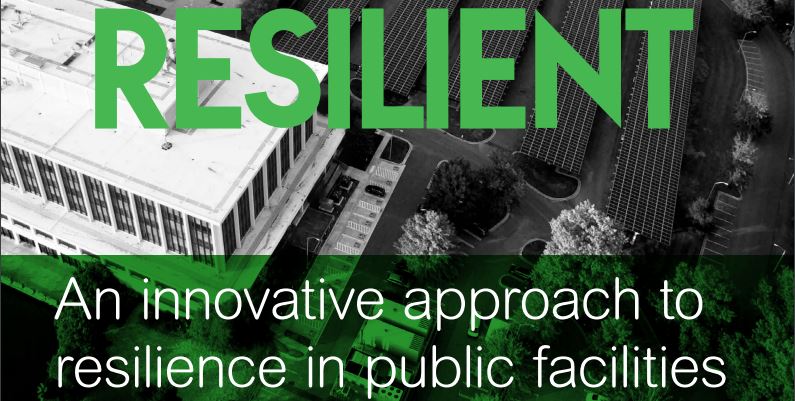
Case Study: An Innovative Approach to Resilience in Public Facilities
Read more about Montgomery County’s innovative microgrid projects. While seeking a reduced carbon footprint through renewables and microgrids, the County also offered a model that could bring microgrid benefits to communities nationwide.
Projects

Public Safety Headquarters, Gaithersburg
The microgrid project is expected to generate 9.6 million kilowatt hours of clean and low emissions energy with the solar canopies and CHP system combined. Ground breaking began in July 2017 with project completion in September 2018. More…
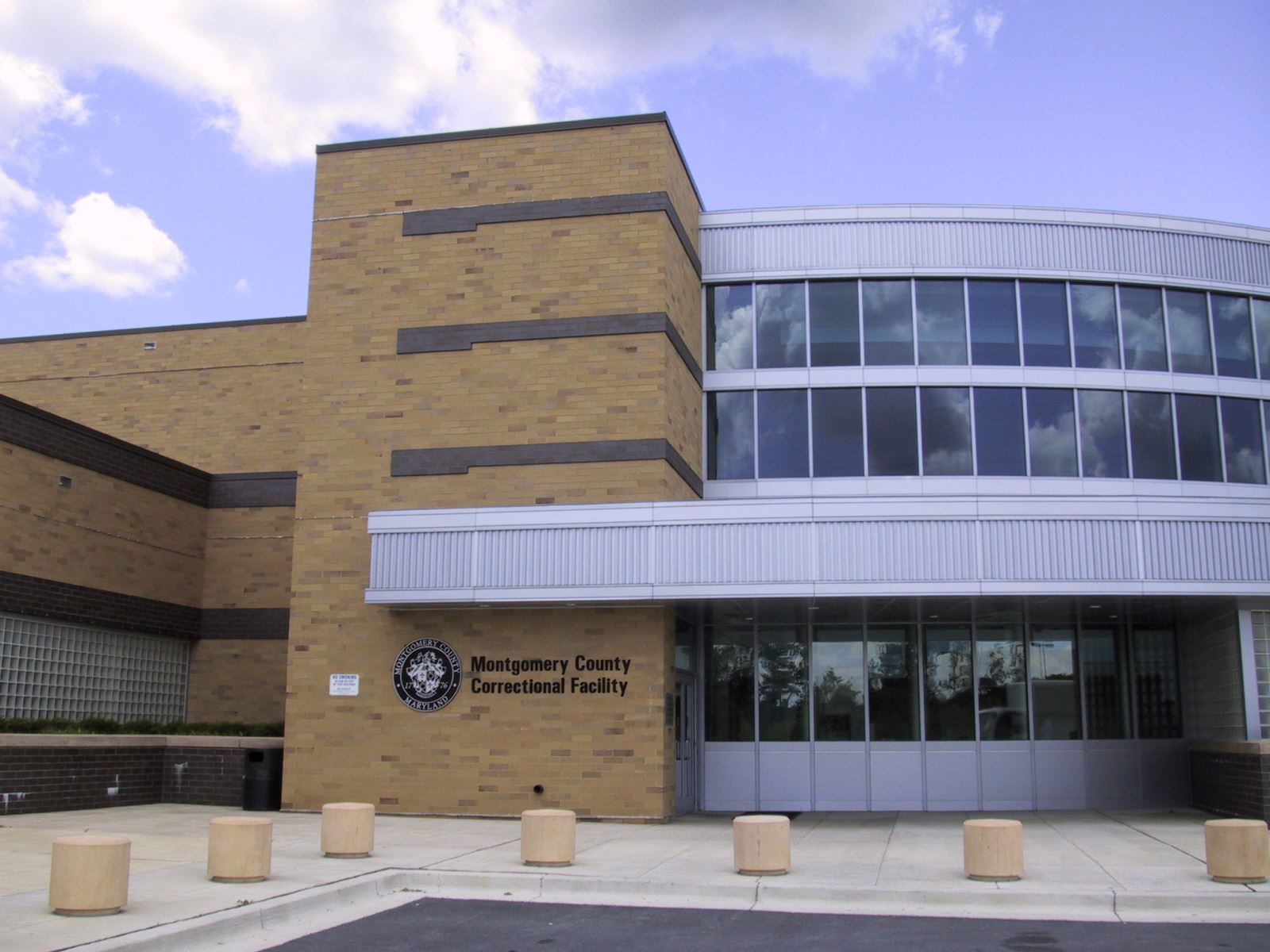
Montgomery County Correctional Facility, Boyds
This microgrid project is expected to generate over 1.7 million kilowatt hours of clean and low emissions energy. Ground breaking began in January 2018 with project completion in September 2018. More…
Media heading
This proposed community microgrid by our partner Pepco Holdings would allow Montgomery County residents to meet their essential needs during a power outage by providing off the grid, clean energy to power emergency services, gas stations, grocery stores, pharmacies, etc. More…


